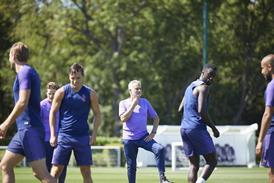The challenge To make a one-hour doc about an evolving news story with commercially sensitive subject matter in three-and-a-half weeks.
The news that a packed passenger jet had glided to a safe landing on the Hudson River in New York City, after losing both engines, lifted people's spirits around the globe. It was a feel-good story at a time of general gloom, a tale of aviation derring-do and a candidate for the luckiest aviation escape ever.
Simon Dickson at Channel 4 responded quickly, asking Darlow Smithson to make a film that, rather than trailing the news pack, would delve deep into the human experience of the crash to ask: what does it feel like to suddenly and unexpectedly face death? The film also had to be the definitive account of what happened, including an analysis of the avionics behind the incident, asking what is involved in a forced water landing and what catastrophic events could have occurred had a single variable been different.
Making a one-hour doc about a constantly evolving story in three-and-a-half weeks is a challenge at the best of times, and we were dealing with people who had just undergone a traumatic event, but luckily I had a team who combined efficiency and sensitivity. To find our passengers, we did a painstaking trawl of news stories for names, home towns and occupations, and contacted hundreds of people. Happily, almost everyone wanted to talk, and their testimony was mesmerising.
Our biggest struggle was securing access to an Airbus in which to film interiors and finding an A320 expert prepared to walk us through the captain's flight from hell in a simulator. After a crash, pilots and airlines tend to go into self-imposed purdah until the official investigation board releases its report.
It was a rollercoaster ride. In the first few days we filmed seven powerful passenger interviews, including a father and son separated during the crash. The second week brought big frustrations: our original A320 expert got cold feet, putting this critical element of the show in peril.
In the end, the persistence of the team unearthed a second superbly qualified Airbus pilot prepared to fly the simulator. And for our plane interiors, a lucky find: the aviation equivalent of a Kwik Fit for Airbuses near Southend, who gave us an A320 and fired up the jet's auxiliary power unit so we could film the cockpit array and cabin signage.
We ran three edit suites continuously for two weeks of late nights and kept the local Thai takeaway afloat - but when Simon said our rough cut made the hair on the back of his neck stand up, we knew it had all been worth it.
Miracle of the Hudson Plane Crash aired on Channel 4 on Thursday 19 February at 10pm.





























No comments yet